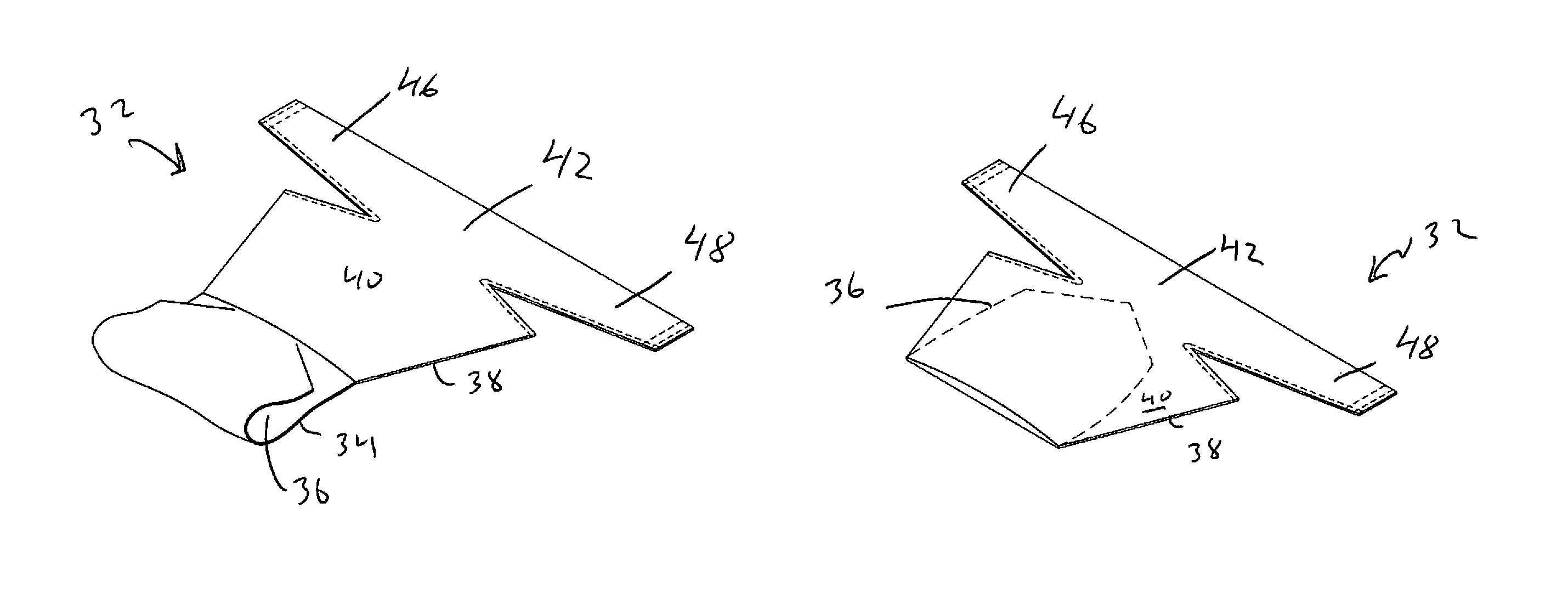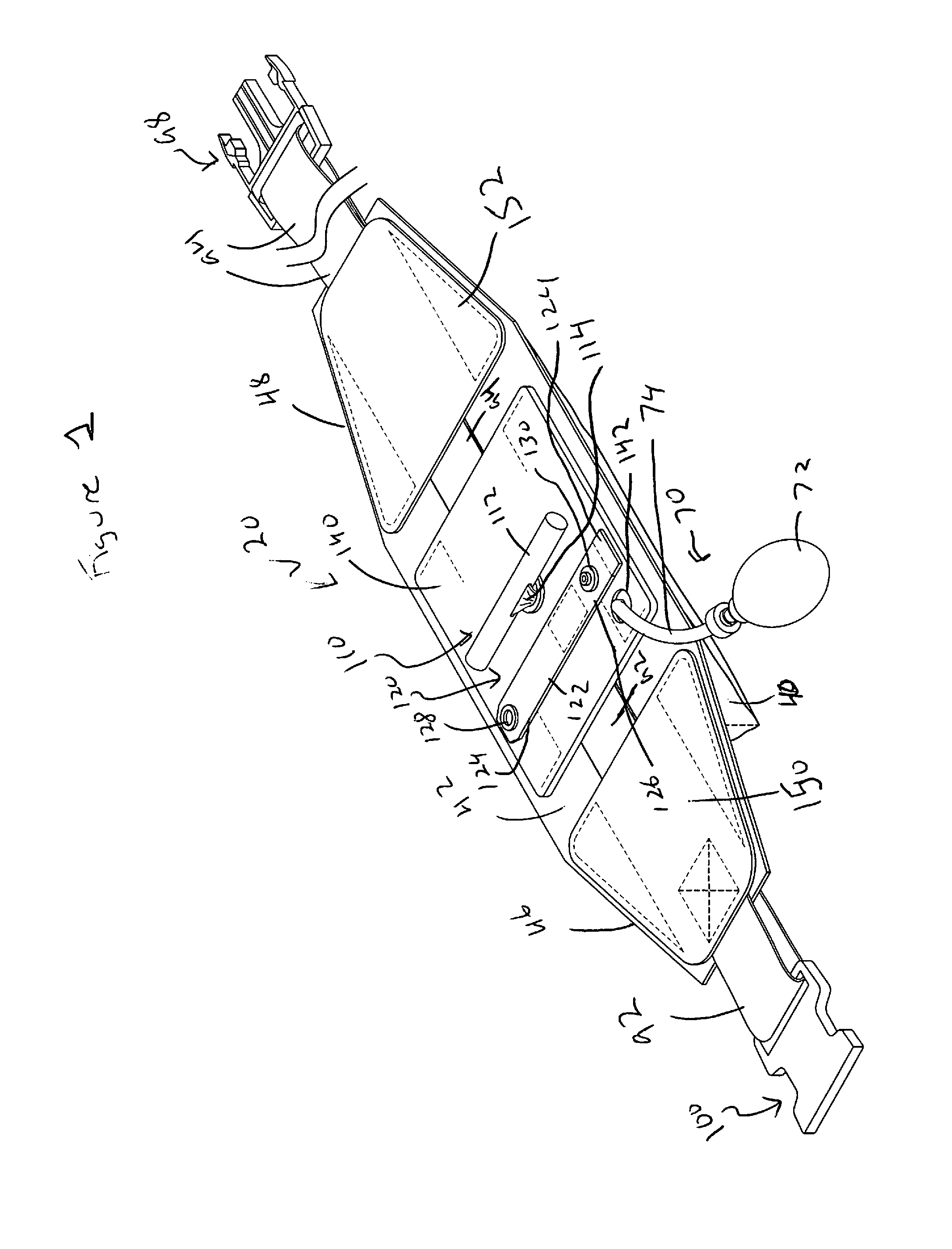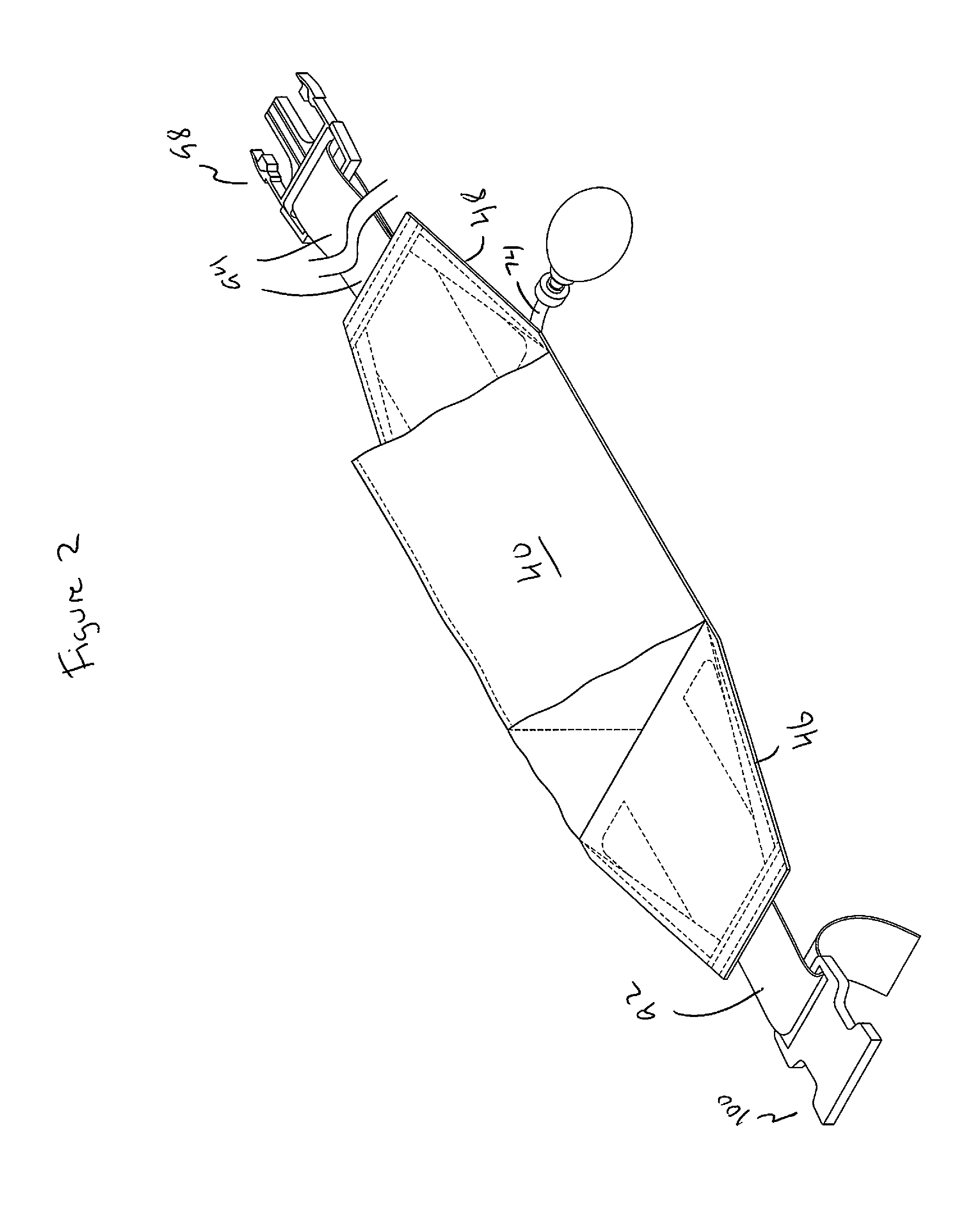Abdominal aortic tourniquet
- Summary
- Abstract
- Description
- Claims
- Application Information
AI Technical Summary
Benefits of technology
Problems solved by technology
Method used
Image
Examples
first embodiment
[0032]As seen in FIGS. 1 through 8, a first embodiment for an abdominal aortic tourniquet is shown with tourniquet generally designated as reference number 20. As best seen in FIGS. 5-7, tourniquet 20 can comprise a monolithically formed one-piece member 32 having a first sealed section 34 to form a bladder 36, a second section 38 forming a receiving pocket 40 and a top section 42. Bladder 36 is formed from welding portions of first sections 34 together though such is not considered limiting and other known methods for creating a sealed bladder can also be used and are considered within the scope of the invention. As seen in FIG. 5, when one-piece member 32 is in a flat or unfolded configuration, prior to assembly of tourniquet, second section 38 is positioned above first section 34 and top section 42 is above second section 38. As best seen in FIG. 6, one-piece member 32 is folded at a point between first section 34 and second section 38 such that first section 32, including sealed...
second embodiment
[0050]FIG. 9 illustrates a second embodiment for an abdominal aortic tourniquet of the present invention and is generally illustrated as reference numeral 220. In this embodiment, plates 60, 150 and 152 have been eliminated and fabric sleeves 222 and 224 are secured to wings 46 and 48, respectively, to serve as the belt portion position maintainers. Sleeves 222 and 224 are preferably sewn to wings 46 and 48. However, any conventional methods for securing can be used and are considered within the scope of the invention. Similar fabric loops 232 and 234 are provided for maintaining the position of belt portions 92 and 94 that were maintained by plate 60 in the embodiment shown in FIG. 1. Fabric loops 232 and 234 can also be preferably sewn to top section 42, though other conventional securement methods can also be used and are considered within the scope of the invention. The operation of tourniquet 220 and the remaining parts of tourniquet 220 are similar to those described above for...
third embodiment
[0051]FIG. 10 illustrates a third embodiment for an abdominal aortic tourniquet of the present invention and is generally illustrated as reference numeral 320. In this embodiment, plates 150 and 152 have been eliminated and one or more fabric loops 322 are secured to wings 46 and 48 to serve as the belt portion position maintainers. Loops 322 are preferably sewn to wings 46 and 48. However, any conventional methods for securing can be used and are considered within the scope of the invention. The operation of tourniquet 320 and the remaining parts of tourniquet 320 are similar to those described above for the tourniquet embodiment of FIG. 1.
PUM
 Login to View More
Login to View More Abstract
Description
Claims
Application Information
 Login to View More
Login to View More - R&D Engineer
- R&D Manager
- IP Professional
- Industry Leading Data Capabilities
- Powerful AI technology
- Patent DNA Extraction
Browse by: Latest US Patents, China's latest patents, Technical Efficacy Thesaurus, Application Domain, Technology Topic, Popular Technical Reports.
© 2024 PatSnap. All rights reserved.Legal|Privacy policy|Modern Slavery Act Transparency Statement|Sitemap|About US| Contact US: help@patsnap.com










